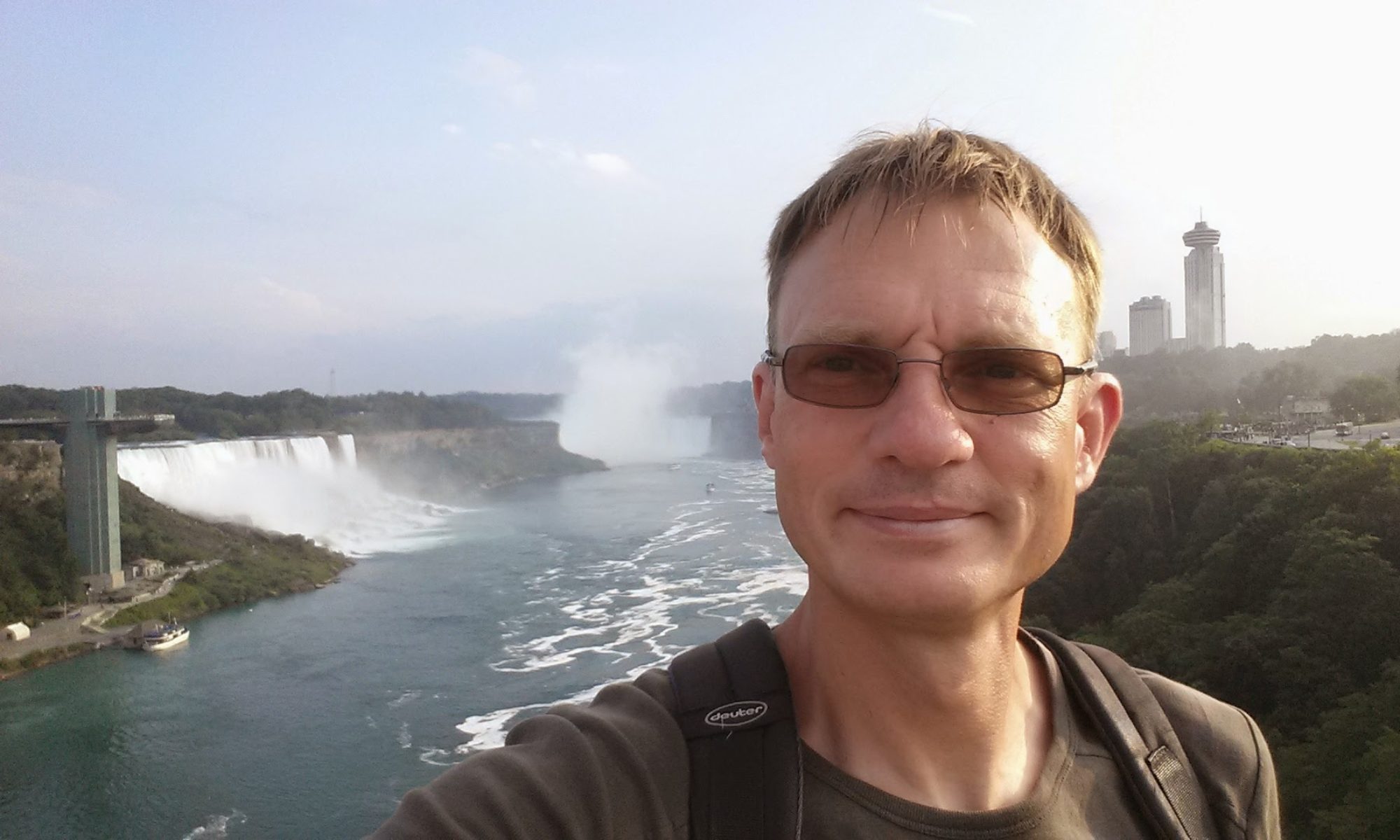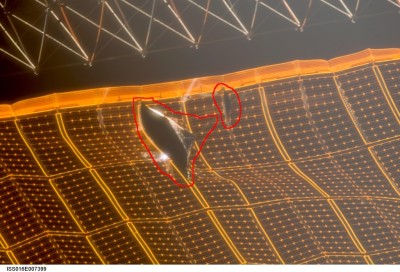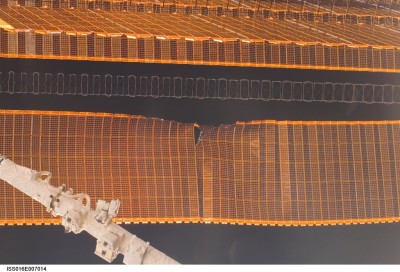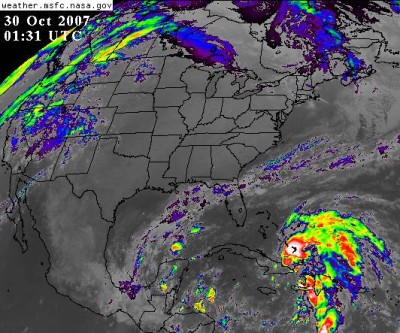STS-120
Report #19
2:30 a.m. CDT Thursday, Nov. 1, 2007
Mission Control Center, Houston, Texas
HOUSTON – Space Shuttle Discovery’s astronauts today will assemble and configure tools to repair a torn solar array blanket on the International Space Station’s port truss during the mission’s fourth spacewalk, now scheduled for Saturday.
Wednesday, mission managers decided the astronauts would not inspect the starboard Solar Alpha Rotary Joint during the spacewalk, changing the priority to mending the torn array. Managers believe the potential exists for further damage to the partially deployed array if the blanket is torn further.
Early Thursday, crewmembers were told the spacewalk would be postponed until Saturday, to give mission managers and engineers additional time to plan the repair activities.
The wakeup song for the eventful day was, “The Lion Sleeps Tonight” by Robert John. It was played at 11:08 p.m. CDT Wednesday. The song was chosen by the crew’s training team.
The array is currently providing power, but to ensure that the array receives no further damage it needs to be fully extended. NASA engineers have been working around the clock examining the issue and preparing the plan for the spacewalk.
The leading theory is that one of the three guide wires on the array snagged on one of the grommets that it feeds through, starting the tear. Spacewalkers Scott Parazynski and Doug Wheelock will attempt to remove the snag and transfer the loads carried by the broken hinge by installing straps that the crew will build today.
The crew also will study the spacewalk procedures delivered today and reconfigure a right-hand spare spacesuit glove to better fit Wheelock.
During the spacewalk, Parazynski will be working from the end of the Orbiter Boom Sensor System (OBSS) grappled by Canadarm2, while Wheelock provides clearance and visual perspective for the robotic arm operator maneuvering Parazynski.
Robotic arm operations to prepare include setting up the station arm for mission control to move the Mobile Transporter from worksite 8, near the P6 segment, to worksite 3, near the center of the station. The OBSS is in better reach of Canadarm2 from worksite 3.
With the spacewalk now planned for Saturday, the schedule still includes the return of Discovery to Earth next Wednesday.
The mission’s fifth spacewalk – which had been planned for Saturday – will be done by the station crew after the shuttle leaves.
The next STS-120 status report will be issued Thursday evening or earlier if events warrant.




